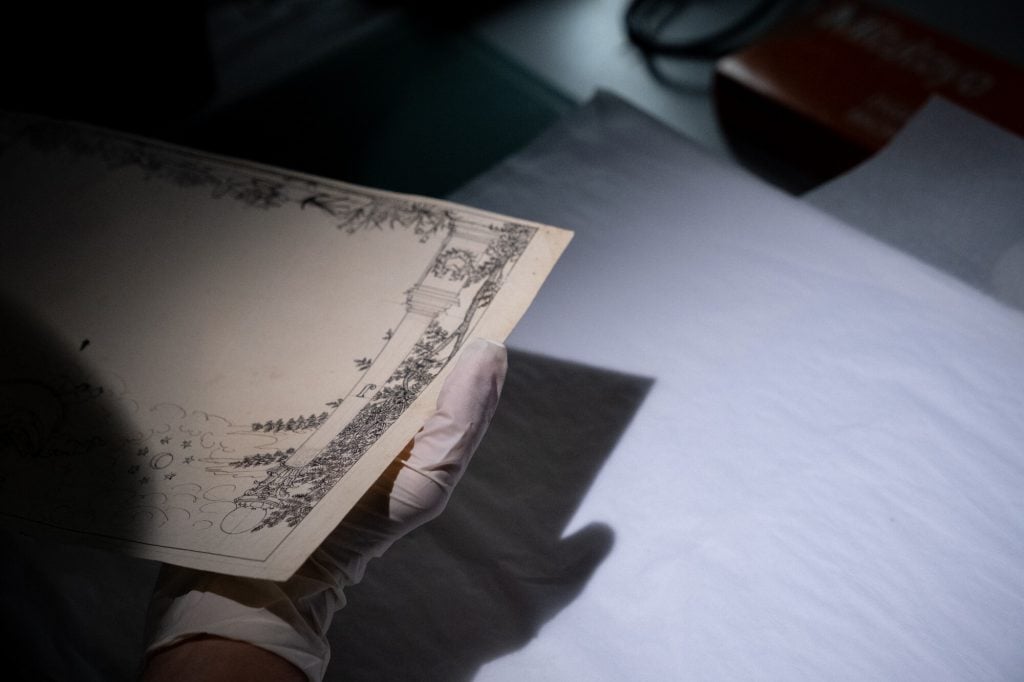Art History
One of Photography’s Earliest Inventors Had an Ingenious Trick to Stop His Images From Over-Developing, Scholars Say
Scientists recently re-examined three of the oldest surviving photographic artifacts in the Americas.

Scientists recently re-examined three of the oldest surviving photographic artifacts in the Americas.

Artnet News

A pioneer of photography may have used urine to create his historical images.
That was one of the revelations a group of conservation experts from Brazil, Portugal, and the U.S. took away upon re-examining a series of what are believed to be among the oldest surviving photographic artifacts in the Americas, all created by the 19th-century artist, adventurer, and inventor Hercule Florence.
A man of French-Italian-Monegasque origin who settled in Brazil, Florence was one of the first to permanently fix images onto paper using chemicals. His innovations in this area preceded those of Louis Daguerre and Henry Fox Talbot, two scientists widely credited with developing photographic technology, but came after the ground-breaking experiments of Nicéphore Niépce.
Unlike those two scientists, who were internationally heralded in their time, Florence went comparatively unrecognized for his work. Fortunately, his achievements are getting an even greater shine now.
Working out of the HERCULES Laboratory at the University of Évora in Portugal, the researchers recently applied a number of analytical techniques to three surviving graphic prints made by Florence: a decorative border for a masonic diploma and two design templates made for pharmacy labels. All three objects are nearly two centuries old.
Photomicrography revealed that the paper Florence used to create the images was similar to that found in previous experiments of his. X-ray fluorescence, meanwhile, showed that silver nitrate or silver chloride was used for the diploma design and gold chloride was used for pharmacy labels. These materials proved crucial in the inventor’s quest to not only capture light, but to record it permanently.
The early studies of Thomas Wedgwood and others likely led Florence to use papers coated with light-sensitive chemicals. On top of these, he placed blackened pieces of glass with designs etched into them.
This process created a positive image, but he still needed a way to stop the picture from continuing to darken when exposed to light. For this solution, he experimented with some unconventional materials.
Through a technique called ATR-FTIR spectroscopy, the researchers identified a greater amount of protein in the pharmacy labels. The finding may have to do with the makeup of the paper, but it could also suggest the presence of urine. In other words, to stop his pictures from developing, Florence might have peed on them or soaked them in excreta. He wrote about experimenting with the latter technique, a museum representative explained.
For the conservation experts, the discovery speaks to the ingenuity of the 19th-century scientist, who worked without the resources of his European contemporaries.
“What Hercule Florence accomplished is really a prehistory of photography,” said Art Kaplan, an associate scientist at the Getty Conservation Institute in Los Angeles, who co-led the research effort with António Candeias of the HERCULES Laboratory. “He was one step ahead, employing certain elements that were commonly used in the photographic process.”
The analyzed photographs, Kaplan added, “are believed to be the only survivors of that time period.”
More Trending Stories: